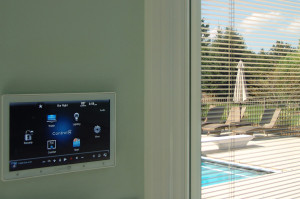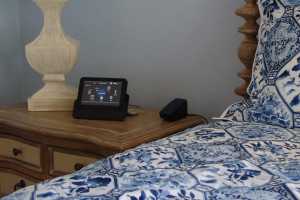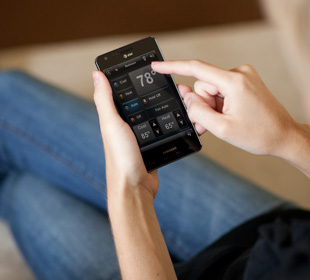The term “smart home” has become somewhat of a buzzword in recent years as a growing variety of gadgets and gizmos have been claiming space on home improvement store shelves at an ever-increasing rate. Another term that’s seen less frequently, but is more familiar among home technology insiders, is “home automation.”
 Whether you’re scrolling through your Twitter feed, reading the paper or watching the news, stories about home technology abound. It’s not uncommon to see the terms “smart home” and “automated home” used interchangeably, but should they be? Is there a difference between a smart home and an automated home?
Whether you’re scrolling through your Twitter feed, reading the paper or watching the news, stories about home technology abound. It’s not uncommon to see the terms “smart home” and “automated home” used interchangeably, but should they be? Is there a difference between a smart home and an automated home?
Call us persnickety, but there is a difference. And understanding this difference is critical to your understanding of what’s possible when incorporating technology into your own home.
To start, we’ll briefly sum up the difference this way:
A smart home is a home with “smart” gadgets that you control via a series of apps, passwords and commands. An automated home is a home that adapts to you, learns, and can run itself.
Anyone can run to the nearest big box store, pick up a smart thermostat, download its app and fiddle with their home’s temperature. Anyone can pick up a smart lock or color-changing light bulb or smoke detector, download the app for each, and be able to control them with their mobile phone or tablet. It’s great to be able to control and monitor things in your home that you couldn’t before, but shouldn’t a smart home make your life easier?
Essentially, these apps are turning your phone into a remote control for your gadgets. You still have to access each individual app to tell your device what to do and when. What you have with all these apps is the equivalent of having multiple remotes on your coffee table to control your TV, Blu-ray player, cable box, and so on. Doesn’t seem that smart, does it?
An automated home can also be controlled (via an app, keypads and devices), but the convenience of an automated home means going beyond smart technology to create a system that doesn’t need your constant attention or a plethora of separate apps. It consolidates individual smart devices and home technology components into one cohesive orchestra that becomes something better than the sum of its parts. It’s not only smart, but elegant. It learns and works in the background, acting as your “comfort butler” to adjust your home to ideal settings. No fumbling with multiple apps. It just works.
So an automated home truly is a smart home, and what you hear of as a “smart home” can often be just a collection of “smart” devices. Meaning your home can contain smart devices that you can control, but only if those devices work together and on their own according to your needs do you have an automated home. All smart homes are not created equal (literally).
 The difference in terminology is slight, but knowing what you want is important to creating a home that provides comfort and convenience without being burdensome to operate. And while you can pick up smart devices at your local hardware store and download their apps on your smartphone, if what you’re looking for is an automated home then your first step should be to consult a home technology integrator that has experience with installing and programming automated home systems that bring a whole new level of safety and comfort to smart homes.
The difference in terminology is slight, but knowing what you want is important to creating a home that provides comfort and convenience without being burdensome to operate. And while you can pick up smart devices at your local hardware store and download their apps on your smartphone, if what you’re looking for is an automated home then your first step should be to consult a home technology integrator that has experience with installing and programming automated home systems that bring a whole new level of safety and comfort to smart homes.
Yes you can control your lighting, temperature, surveillance, shades and much more. But more importantly, your smart automated home doesn’t have to be managed. It just works, and it can just be enjoyed.


